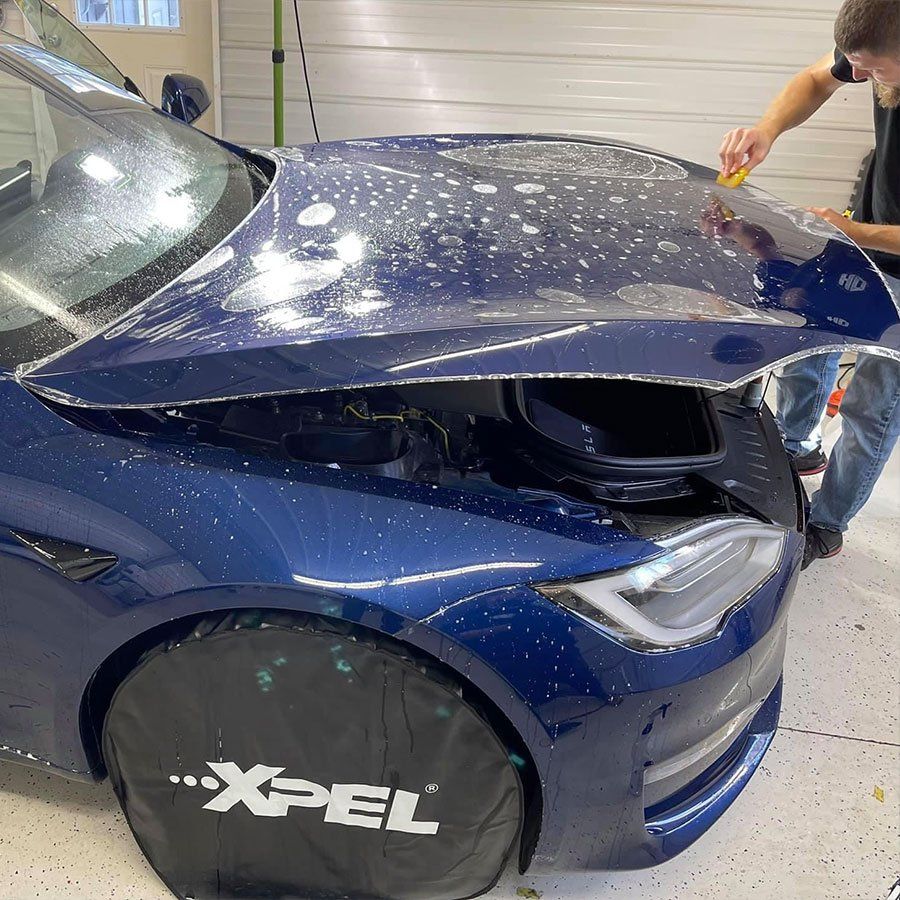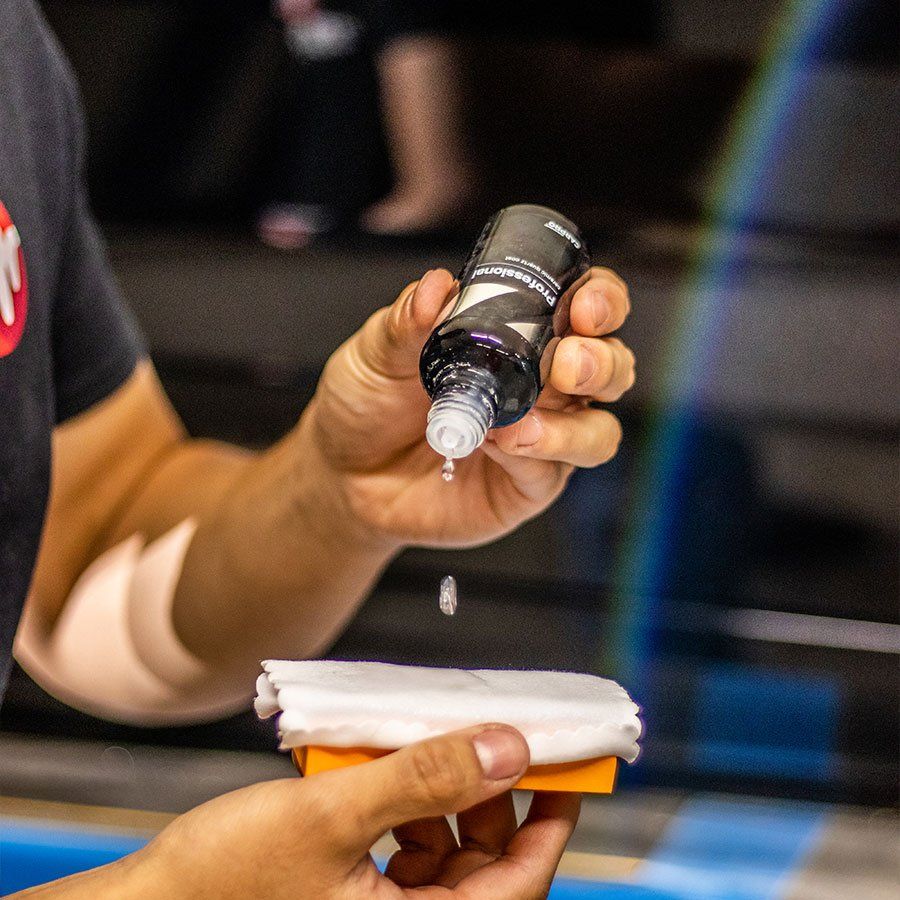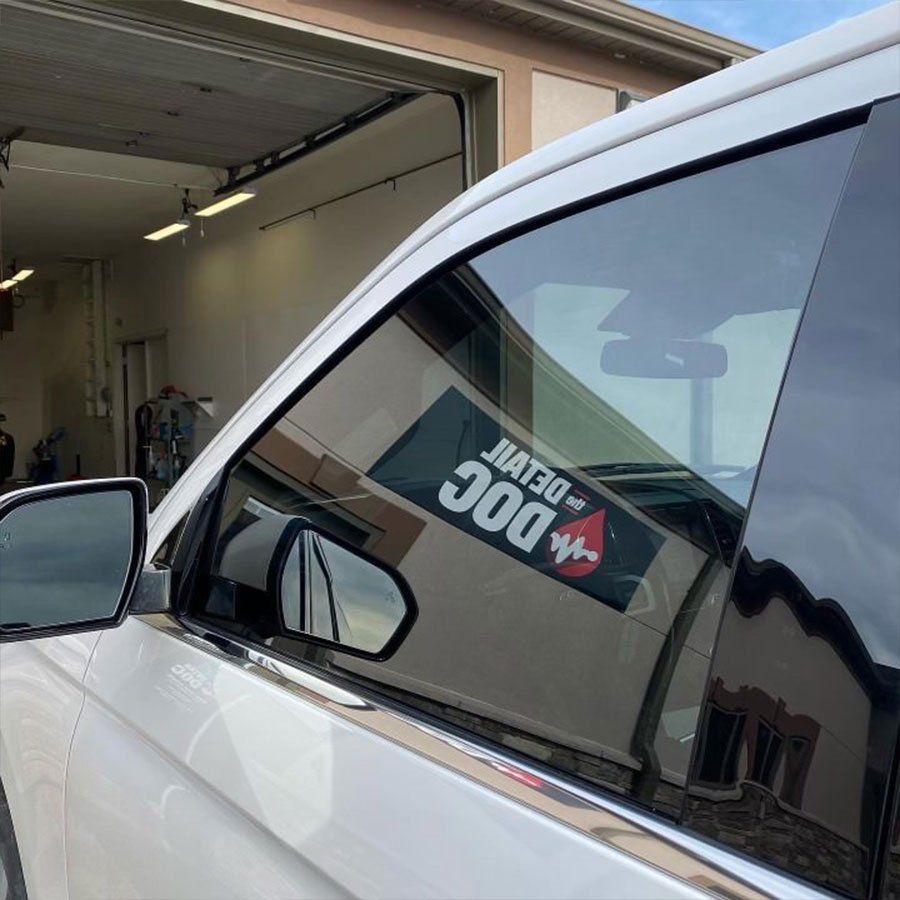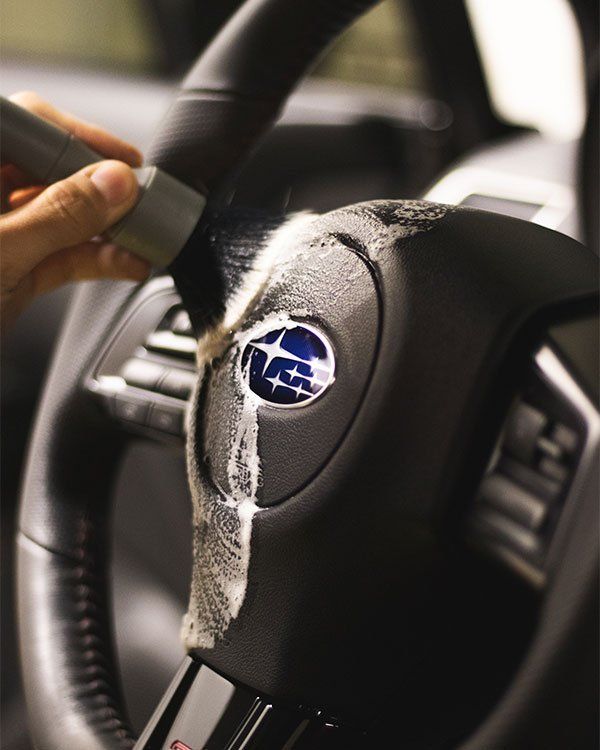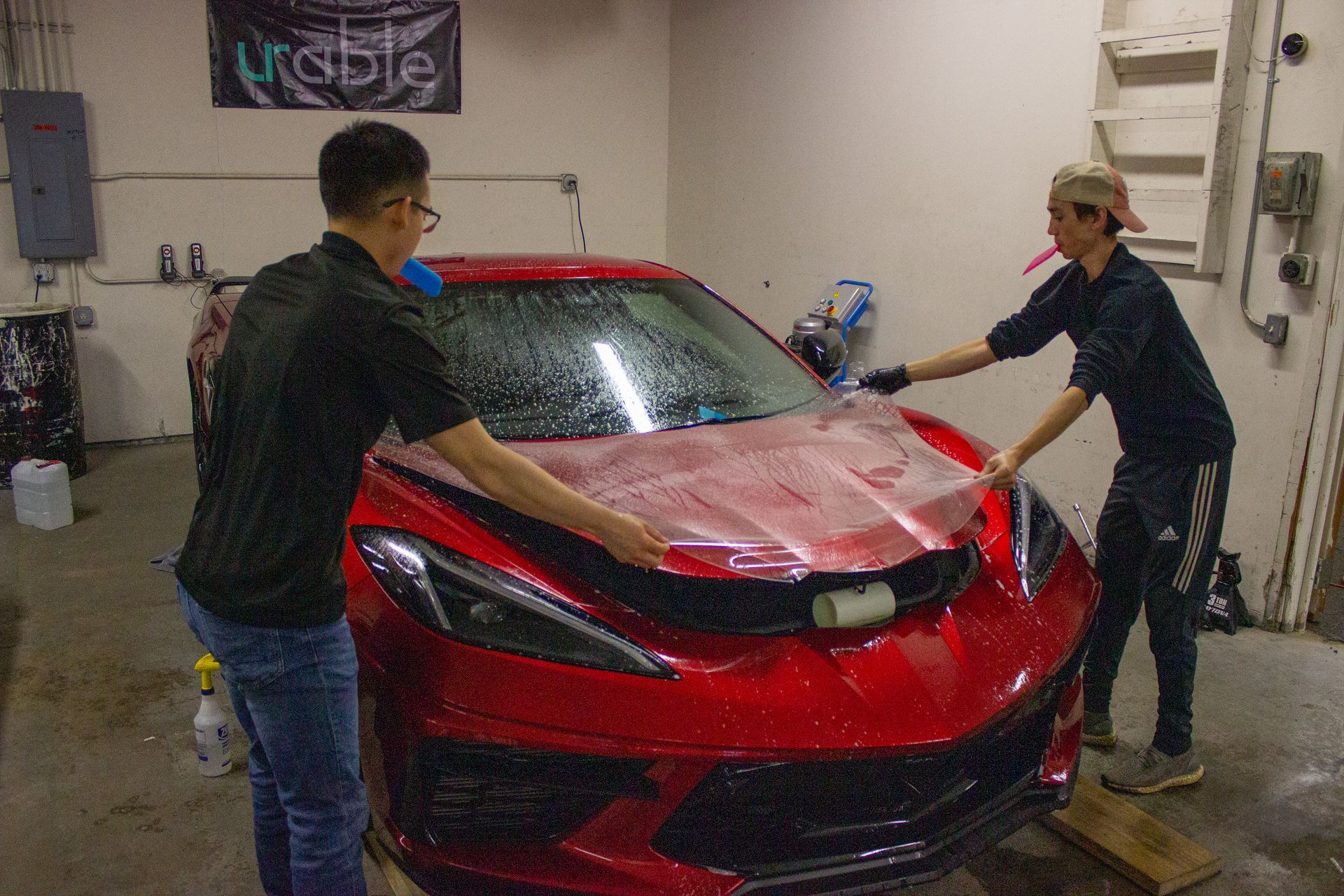The Detail Doc Blog
How Many Layers of Ceramic Coating Should You Apply to Your Car?
(989) 244-0505 GET SCHEDULED NOWThe number of ceramic coating layers you apply depends on your goals, be they basic protection or a shiny finish. Just one layer can get the job done, guarding the exterior paint against everyday damage. But if what you seek is deeper gloss and extended durability, applying multiple layers might be better. Remember, though, that different ceramic coating models from brands offer varied results; Gtechniq, 3D, and HydroSilex, for instance, all have unique offerings. Before we dive in, let's take a moment to understand what ceramic coating layers mean for your vehicle and how many layers of ceramic coating you should apply to your car!
While the optimal number of layers of the ceramic coating varies based on the product and the desired level of protection, it is generally recommended to apply one or two layers for most products. However, some enthusiasts may choose to apply multiple layers for reinforced protection, enhanced gloss, and extended longevity. It's important to follow the manufacturer's guidelines and consider factors such as proper curing time and environmental conditions when applying multiple layers for best results.
Understanding Layers of Ceramic Coating
When it comes to applying a ceramic coating to your vehicle, the number of layers can significantly impact the level of protection and shine your car's paint will have. Ceramic coating acts as a shield for your car's exterior, protecting it from environmental contaminants and enhancing its visual appeal. But how many layers should you apply? This depends on a variety of factors, including the specific product used, the desired level of protection, and the overall look you're aiming for.
A single layer of ceramic coating provides a basic level of protection and can offer benefits such as resistance to UV rays and chemical substances. However, if you want to achieve enhanced durability and a deeper gloss, multiple layers may be necessary. Each layer chemically bonds with the surface, forming a protective barrier that safeguards your car's paint from potential damage caused by pollutants, dirt, and debris.
The number of layers also affects the longevity and effectiveness of the ceramic coating. Adding more layers strengthens the protective barrier against scratches, swirl marks, and fading. It's like building additional layers of defense for your car's exterior, ensuring that it remains resilient in the face of everyday wear and tear.

Advantages of Multiple Ceramic Layers
When it comes to protecting and enhancing your vehicle's appearance, the additional layers of ceramic coating offer a multitude of benefits that go beyond what a single layer can provide. Let's break down these advantages of ceramic coating layers in detail.
Reinforced Protection: Applying multiple layers of ceramic coating creates a thicker protective barrier that offers enhanced resistance against UV rays, acid rain, and environmental contaminants such as bird droppings, tree sap, and road grime. This reinforcement not only shields the car's exterior from damage but also extends its longevity by preserving its pristine appearance over time.
Enhanced Gloss: Each additional layer contributes to a deeper and more reflective shine, elevating the vehicle's aesthetic appeal. The cumulative effect of multiple layers intensifies the gloss, providing a luxurious finish that makes the car stand out with a head-turning gleam.
Moreover, the enhanced gloss doesn't just serve an aesthetic purpose. It also provides additional protection by making it more difficult for contaminants to adhere to the surface. This means that dirt and debris are less likely to stick, making it easier to maintain and clean the vehicle while ensuring it stays looking showroom fresh.
Longevity: By applying multiple layers of ceramic coating, you're not only optimizing the initial protection but also extending its lifespan. This reduction in frequency for reapplication diminishes the need for regular maintenance, such as waxing and polishing routines, thus saving both time and effort in the long run.
The prolonged life of multi-layered ceramic coatings means that you won't have to worry about frequent touch-ups or reapplications. This not only saves you money in the long term but also minimizes disruptions to your schedule.
While one layer of ceramic coating offers notable protection and shine, multiple layers reinforce these benefits, creating an impervious shield that safeguards your car's exterior from various environmental hazards while upholding its striking visual appeal over an extended period of time.
Process for Applying Multiple Layers
Applying multiple layers of ceramic coating to your car's exterior requires precision and attention to detail. Every step in the process plays a critical role in ensuring that the coating bonds effectively, providing consistent protection and a uniform finish.
Surface Preparation
Before applying the first layer of ceramic coating, it's essential to meticulously prepare the car's surface. This involves thorough cleaning and decontamination to eliminate any imperfections that could hinder the application.
The surface must be free from dirt, grease, and other contaminants to ensure that the coating can bond effectively with the paint. Decontamination may involve using specific chemical cleaners, clay bar treatments, or other specialized products to remove any embedded particles or residues. The goal is to create a pristine surface that allows the coating to adhere uniformly, maximizing its protective properties.
Layer Application
Each layer of ceramic coating is applied methodically to ensure complete coverage and even distribution across the car's exterior. This meticulous application process is crucial for achieving consistent protection and a uniform finish.
The application must be carried out carefully, avoiding any missed areas or uneven coverage that could compromise the effectiveness of the coating. Proper techniques and tools are employed to guarantee that the coating adheres seamlessly to every part of the vehicle's exterior, creating an uninterrupted shield against environmental factors.
Curing Time
Allowing adequate curing time between each layer is crucial for optimal bonding and performance. Curing is the process where the coating chemically adheres to the surface, forming a durable and long-lasting bond with the paint.
During this time, it's important to maintain controlled environmental conditions to facilitate the curing process. Factors such as temperature, humidity, and airflow can impact how effectively the coating cures onto the car's surface. Additionally, following manufacturer guidelines regarding curing times is imperative to ensure that each layer achieves its maximum protective potential.
Proper curing time guarantees that each layer bonds effectively with the paint, providing enhanced durability and longevity while maximizing its protective properties against UV rays, chemical exposure, water spotting, and more.
By following these steps properly in surface preparation, layer application, and curing time, you can ensure that each layer of ceramic coating is applied with precision, resulting in comprehensive protection for your car's exterior. The attention to detail at each stage contributes to the superior finish and long-lasting performance of the ceramic coating.
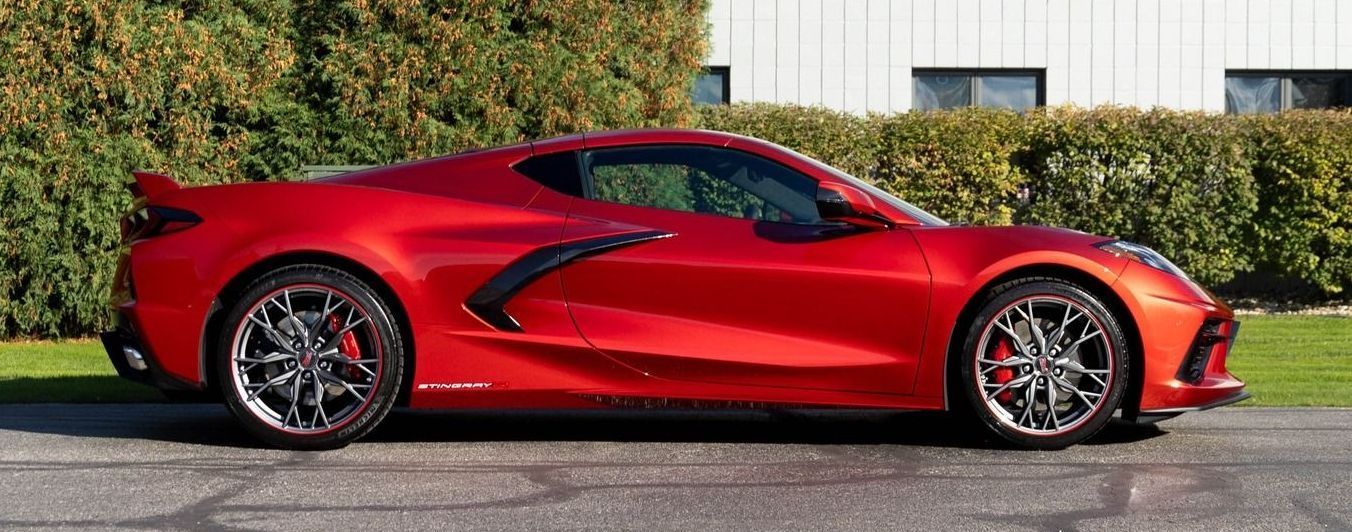
Limitations with Excessive Ceramic Coating
As the saying goes, "more is not always better," and this rings true when it comes to ceramic coating. Piling on layer after layer of ceramic coating might initially seem appealing, offering increased protection and longevity for your car's paint. However, there are crucial limitations to keep in mind.
Diminishing Returns: Just like how one extra scoop of ice cream doesn't always bring the same joy as the first, each additional layer of ceramic coating may provide diminishing returns in terms of added protection and gloss. The benefits start to diminish with each successive layer, meaning that the increase in protection doesn't match the effort and cost involved.
Affects Clarity and Aesthetics: Excessive coating can create a thicker film on the car's surface, potentially impacting the clarity of the paintwork and diminishing the overall aesthetics of the vehicle. Instead of achieving a smooth, glossy finish, you may end up with an uneven or clouded appearance.
Increased Risk of Visual Imperfections: Applying too many layers brings the risk of visible streaking and uneven application, which can detract from the appearance of your car. This can be counterproductive to the intended purpose of enhancing the vehicle's overall look.
By understanding these limitations, you can make informed decisions about how many layers of ceramic coating are appropriate for your car. It's essential to strike a balance between sufficient protection and maintaining the aesthetic appeal of your vehicle.
Assessing the Need for Multi-Layer Ceramic Coatings
Have you ever considered the unique needs of your car when it comes to ceramic coatings? Just as we care for our skin differently based on our lifestyles, our cars also require varying levels of protection based on several factors.
The first thing to consider is how often you use your car. If you're driving every day in heavy traffic or embarking on long road trips through dusty or gravel-covered roads, your car faces more risks than a vehicle that sits in the garage most of the time.
Environmental exposure is another crucial factor. Does your car often endure extreme temperatures, intense UV rays, or frequent encounters with bird droppings and tree sap? All these elements can wear down the protective coating on your car over time, making it more susceptible to damage.
Combining all these considerations paints a picture of what level of protection is right for your car. It's like choosing the right sunscreen based on your skin type and where you plan to spend your day.
The experts at The Detail Doc understand these nuances and know precisely what level of defense each type of vehicle requires. We take into account how and where you drive your car and provide tailored recommendations based on individual car care needs.
In this high-stakes game of protecting your vehicle's paintwork, being well-informed may very well be your ace in the hole. Evaluate these factors and let The Detail Doc guide you in providing a personalized defense strategy for your beloved vehicle.
Contact us today!

